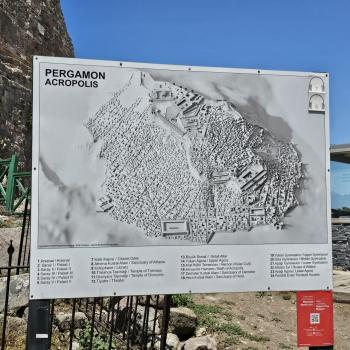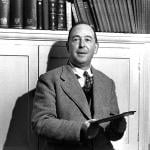
For close to forty years Pat Metheny, and his right hand man Lyle Mays, have created some of the most influential and popular jazz in the whole post-Coltrane, post-Miles era, and yes he still wears his hair and his shirts as if he was a refugee from the 60s. As is so often the case, though the Pat Metheny Group (and various individual permutations with Pat teaming up with others or going solo) has had success in the U.S., it has been even more wildly successful in Europe. On top of all this, Pat Metheny is prolific in a way that few jazz musicians have ever been, creating one classic tune after another, after another. There are literally hundreds of important tunes added to the jazz lexicon by Metheny and Mays, or just Metheny. What is perhaps most amazing about this is that front man Pat Metheny is a guitarist. Granted he is an extraordinary guitarist, but guitarists have seldom had a major impact on jazz in the way Metheny has. Yes there is Wes Montgomery and Joe Pass and George Benson (and pop jazz artists like Stanley Jordan or Norman Brown), but jazz is mainly a form of music which fronts horn players and pianists, not guitar players. In most any way you can measure things, Pat Metheny has been a game changer when it comes to that uniquely American art form known as jazz. Even more surprisingly, Pat Metheny is a white boy born in 1954 in Lee’s Summit Missouri, not notably the epicenter from which famous jazz musicians come.
I will leave to you the reading of online articles about the life and career of Metheny, and there is plenty to read, including his classical training, but the focus of this post must be on the music itself. If you listen to the earliest albums of Metheny like Bright Sized Life or Watercolors you would not guess that Metheny would become a leading exponent of that hybrid music form combining rock influences with jazz influences, using the electric guitar (often the synthesized electric guitar) to create an art form. Nor would you guess he could score movies like The Falcon and the Snowman, or Map of the World, both excellent scores. Nor would you have anticipated that he would hire a boatload of Brazilians and Latinize his jazz for a good period of time. Pat Metheny was and is an impresario and a musical genius, recognized even by those who do not find Metheny’s kind of jazz their cup of tea. All those Grammy awards and albums of the year show not merely his productivity, but his creativity and skill.
So where should the novice listener begin if they want to take in the Metheny oeuvre and begin to appreciate it? Frankly there is just too much to choose from, and in too many forms—solo, duets, trios, quartets, the whole group, with a symphony orchestra, etc. You catch my drift. Here is simply a good list, not a definitive list of twenty Pat Metheny albums you should check out. I promise, it’s diverse. It’s not just jazz fusion— its all kinds of things jazz, and it’s a blessing.
Among the early albums start with Bright Sized Life, which features the great fusion bass player, Jaco Pastorius. You will find it acoustic as much as electric, but already you can hear the lyricism that is so often remarked about with Metheny’s compositions. His music is melodic, not a-tonal, lyrical, not boringly repetitive. Then move on to his basically duet album with Lyle Mays, As Falls Witchita Falls…. Here you can begin to see what a lethal combination these two musicians could be. I would say that Mays definitely brings the best out of Metheny, and they are great musical collaborators at the composition level as well as at the performance level. They stimulate each other to greatness. The proof is in the listening. This post could just focus on the Pat Metheny Groups’ highlights. All of the following albums are keepers, and some are classics—-
American Garage (1980)
First Circle (1984)
Still Life (Talking) (1987)
Letter from Home (1989)
The Road to You (1993— actually go with the Live version)
We Live Here (1995)
The Way Up (2005). This latter one is the closest thing to a major four movement jazz symphony ever created, and I doubt the band could ever equal this magnificent composition, so rich and varied. If you want to start with complex and textured, Metheny at his finest with a band, this is it.
There are frankly too many solo projects and collaborations to mention, but here are some of the very best ones—- solo— One Quiet Night (2003), Orchestrion (2010 an amazing musical creation that allows one person to be a one man band through the genius of computer programming).
As for duets the gorgeous Beyond the Missouri Sky with fellow Mizzou native Charlie Haden is a keeper (1997). The Metheny/Muldau duet CD and the following CD with drums and bass, are both fantastic (2006/2007). The duet CD with Polish chantreuse Anna Maria Jopek entitled Upojenie (2002) is enchanting), and just for good measure, Shadows and Light with Joni Mitchell (doing her songs—1980— with Mays and Michael Brecker and Jaco Pastorius) is a tour de force (watch the DVD).
There is so much more I could say, but if your vision of Pat Metheny is ‘that train song’ (Last Train Home— from Still Life) or the jazz synth stuff of Offramp days you need to broaden your horizons
Pat Metheny is far too polymath to be pigeonholed into any one jazz or fusion category. For my money however, the Pat Metheny group was mostly at its best when it had Pedro Aznar and the Brazilians bringing that Latin heat and soaring chanting and intoning (see Letter from Home and the Journey to You Live). We are still singing those tunes.












